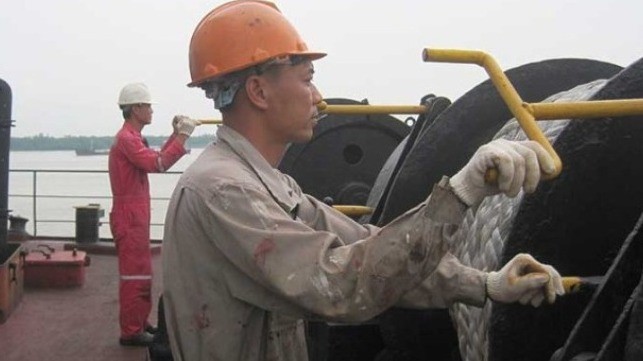Nine months into the pandemic, gaining recognition for the role seafarers have played in maintaining commerce and gaining their recognition as key works to help facilitate crew changes remains a key element of the International Maritime Organization’s mission. The IMO, along with the unions and other shipping organizations continue to estimate that thousands of seafarers remain stuck aboard their ships or unable to work because of travel restrictions that make it difficult to join the ships.
At a virtual Maritime Safety Committee (MSC) meeting on November 16, BIMCO reports that the IMO approved a circular recognizing the industry-developed protocols, which set out general measures and procedures designed to ensure that ship crew changes and travel can take place safely during the pandemic.
The protocols yet again emphasize the need for governments to designate seafarers as key workers providing an essential service. It includes practical steps for joining and leaving ships, including the need for compliance and strict adherence with COVID-19 testing and quarantine requirements, as well as measures to prevent infection on board ships.
BIMCO reports that the MSC also agreed to create a new special module in the IMO’s online information database, global integrated shipping information system (GISIS), to register ports that facilitate crew changes and disseminate information to enable shipping companies to easily plan and organize crew change during the pandemic. The module also will contain information about national focal points of contact which can be easily accessed by the industry in general and shipping companies in particular.
The IMO has been seeking to call attention to these issues since the spring hosting discussions and calling on member states to take actions to accommodate crew changes. A range of nations supported the initiatives and many geographies have been supportive of the efforts to facilitate crew changes. Singapore, for example, was recently recognized for its programs.
Other, less highlighted destinations have also been successful in joining in the efforts. For example, the Subic Bay Freeport two months ago launched a program to support crew changes. According to the Subic Bay Metropolitan Authority, seven ships with more than 500 mostly Filipino crew have taken advantage of the program since it was launched on September 10. Subic is one of four designated crew change hubs with the Department of Transportation exploring adding at least two more centers in the Philippines.
Despite these efforts, in October, the International Transport Workers’ Federation and the International Chamber of Shipping repeated their estimates that there are over 400,000 seafarers trapped at sea working beyond their initial contracts.
Shipping lines have been forced to reroute ships and incur increased expenses to complete crew changes.
BY THE MARITIME EXECUTIVE 11-17-2020 06:01:06








Comments (0)